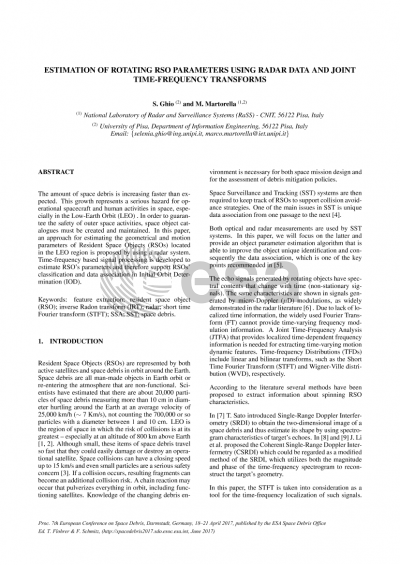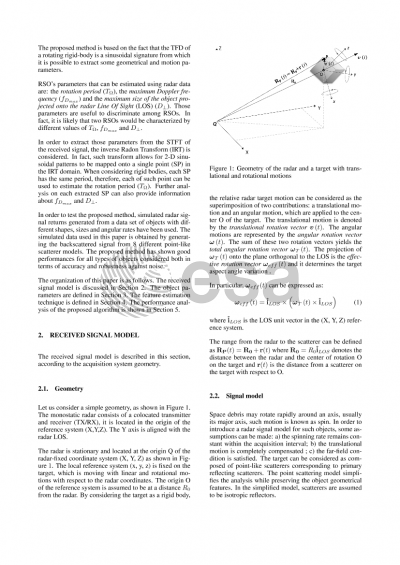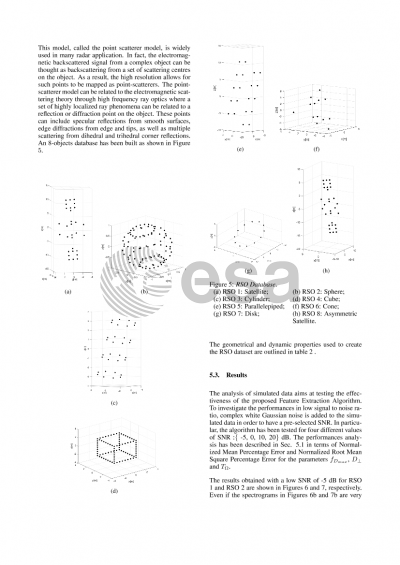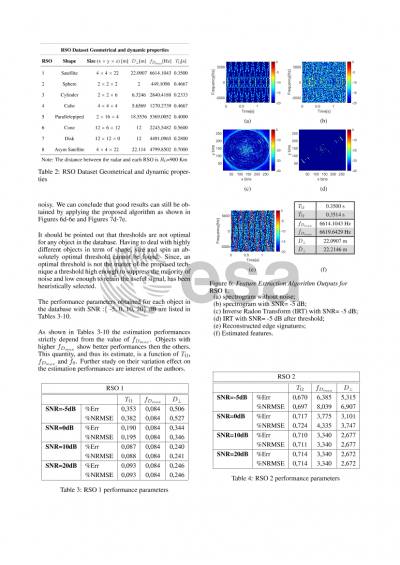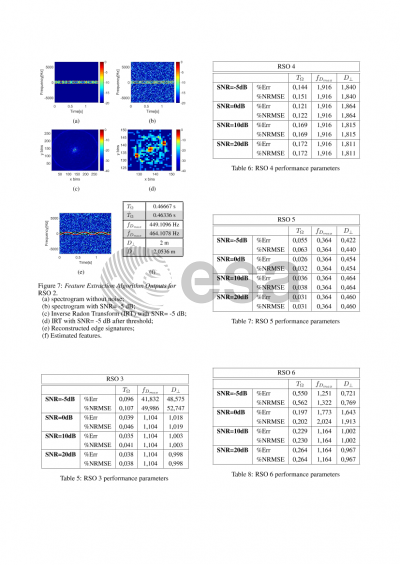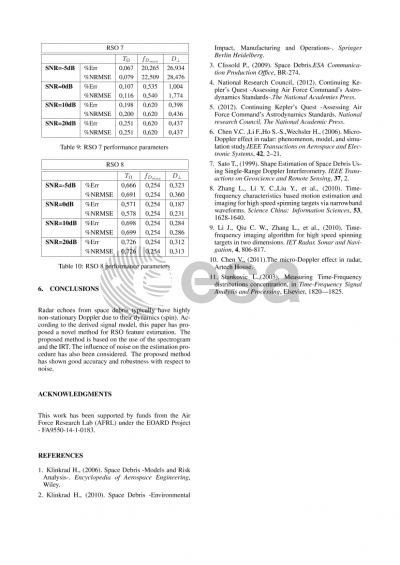Document details
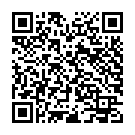
Abstract
The amount of space junk is increasing faster than expected [1]. This growth represents a serious hazard for operative spacecraft and human activities in space, especially in the Low Earth Orbit (LEO) [2]. In order to guarantee the safety of outer space activities, space object catalogues must be build-up and maintained. Unique identification of space objects in orbit around the earth is a problem that still has to find satisfactory solutions [3]. Most of the existing object recognition systems are based on the use of optical data and photogrammetry, which are limited by the effectiveness and reliability of optical sensors. Radar systems may provide an effective alternative or a complement to the existing systems.
In this paper, an approach for estimating the geometrical and motion parameters of a rotating body located in the LEO region using a radar system is introduced. The extracted features could be helpful to associate a radar detection with the correct Resident Space Object (RSO) and therefore provide unique identification. The echo signals generated by rotating objects have spectral contents that change with time (non-stationary signals). The same characteristics are shown in signals generated by micro-Doppler (D) modulations, as widely demonstrated in the radar literature [4].
Due to lack of localized time information, the widely used Fourier Transform (FT) cannot provide time-varying frequency modulation information. A Joint Time-Frequency Analysis (JTFA) that provides localized time-dependent frequency information is needed for extracting time-varying motion dynamic features. Time-frequency Distributions (TFDs) includes linear and bilinear transforms, such as the Short Time Fourier Transform (STFT) and Wigner-Ville distribution (WVD) respectively.
In this paper, the STFT is taken into consideration as a tool for the time-frequency localization of such signals. The proposed method is based on the fact that the TFD of a rotating rigid-body is a sinusoidal signature from which it is possible to extract some geometrical and motion parameters of an object of interest. By looking at RSOs, useful parameters for their discrimination are the angular rate (?), the maximum Doppler frequency (fdmax) and the maximum dimension (Dmax) of the object. In order to extract those parameters from the STFT of the received signal, the Inverse Radon Transform (IRT) is considered. In fact, such transform allows for 2-D sinusoidal patterns to be mapped onto a single point (SP) in the 2-D Radon domain. When considering rigid bodies, each SP has the same period, therefore, each of such point can be used to estimate the angular rotation ?. Further analysis on each extracted SP can also provide information about fdmax and Dmax. In order to test the proposed method, simulated radar signal returns generated from a data set of objects with different shapes, sizes and angular rates has been used. The proposed method has shown good performances for all types of object considered both in terms of accuracy and robustness with respect to the presence of noise.
REFERENCES
1. Clissold, P. (2009). Space Debris. ESA Communication Production Office, BR-274.
2. Klinkrad, H. (2010). Space Debris -Environmental Impact, Manufacturing and Operations-. In Encyclopedia of Aerospace Engineering, Wiley.
3. National Research Council. (2012). Continuing Kepler's Quest -Assessing Air Force Command's Astrodynamics Standards-. The National Academies Press.
4. Chen, V.C. ,Li, F.,Ho , S.-S.,Wechsler , H. (2006). Micro-Doppler effect in radar: phenomenon, model, and simulation study. IEEE Transactions on Aerospace and Electronic Systems, 42, 2-21.
Preview
